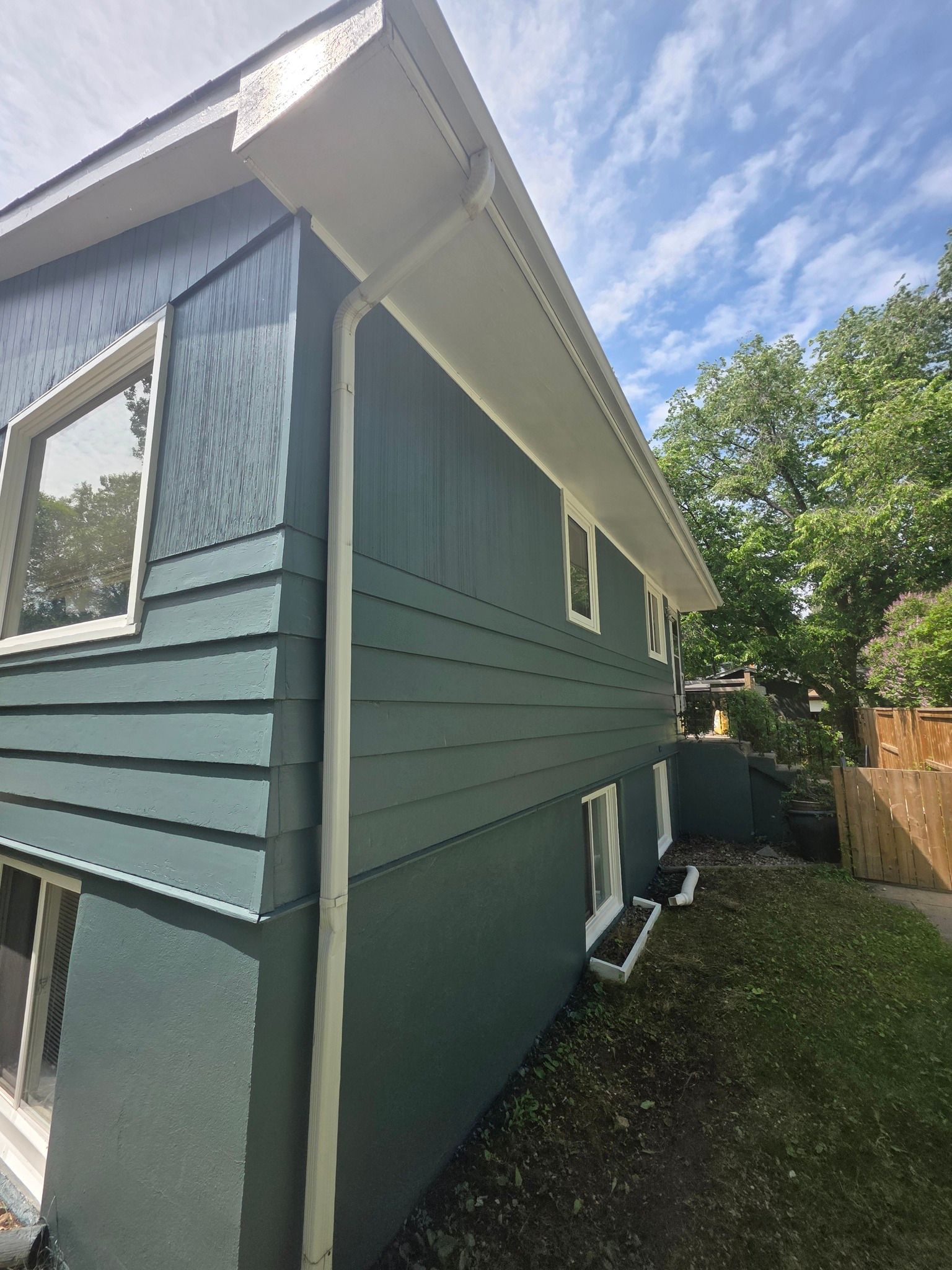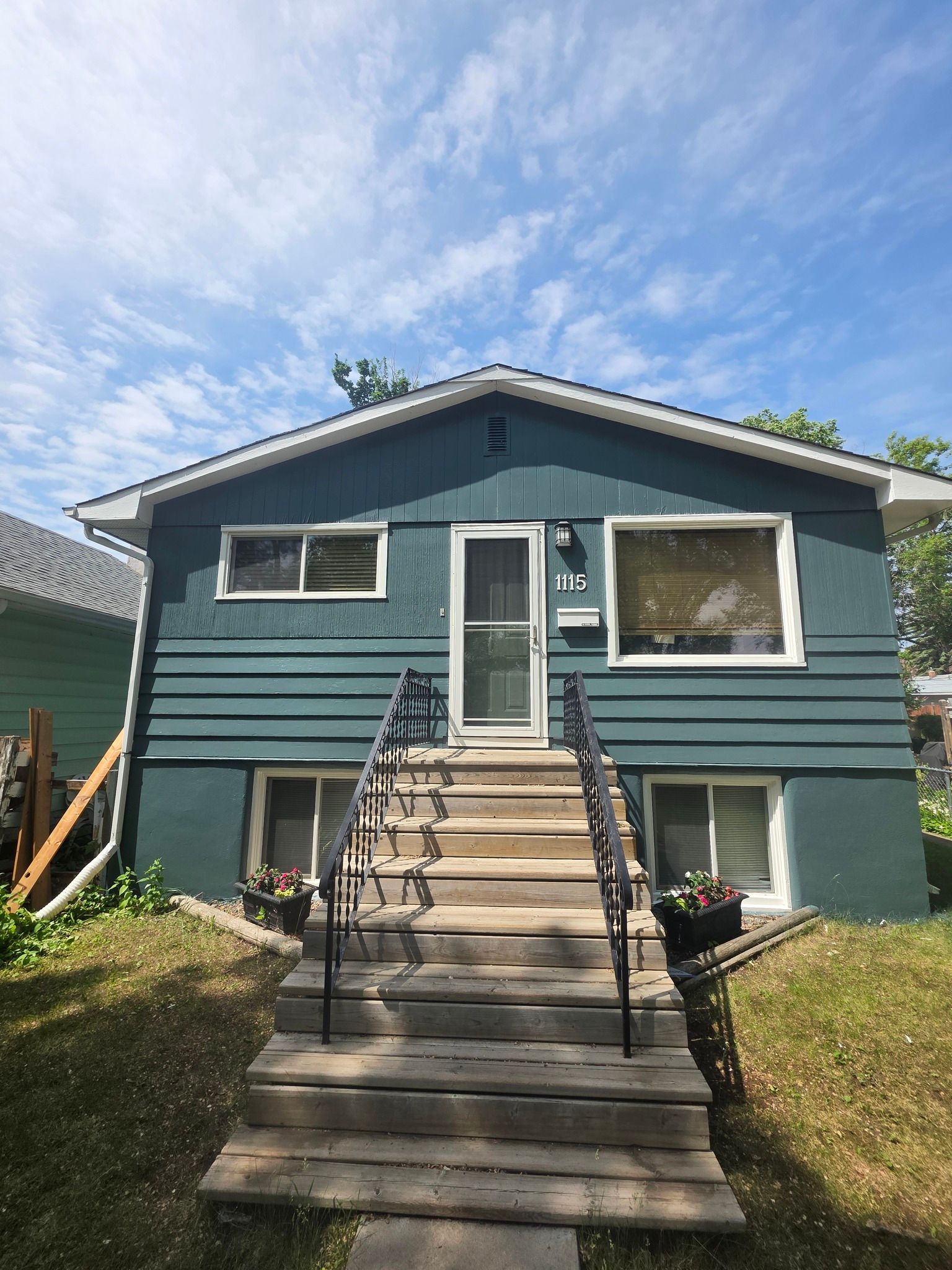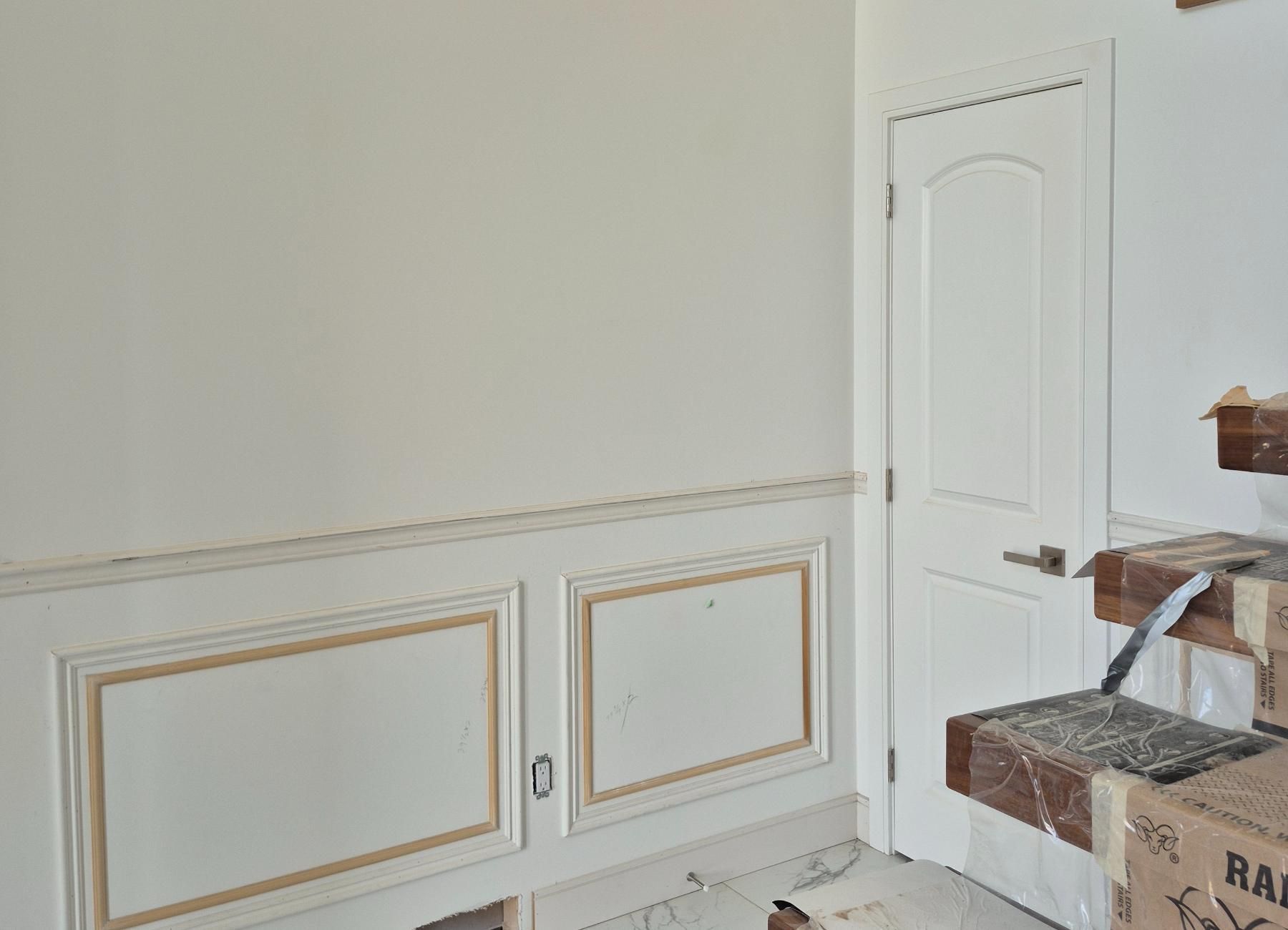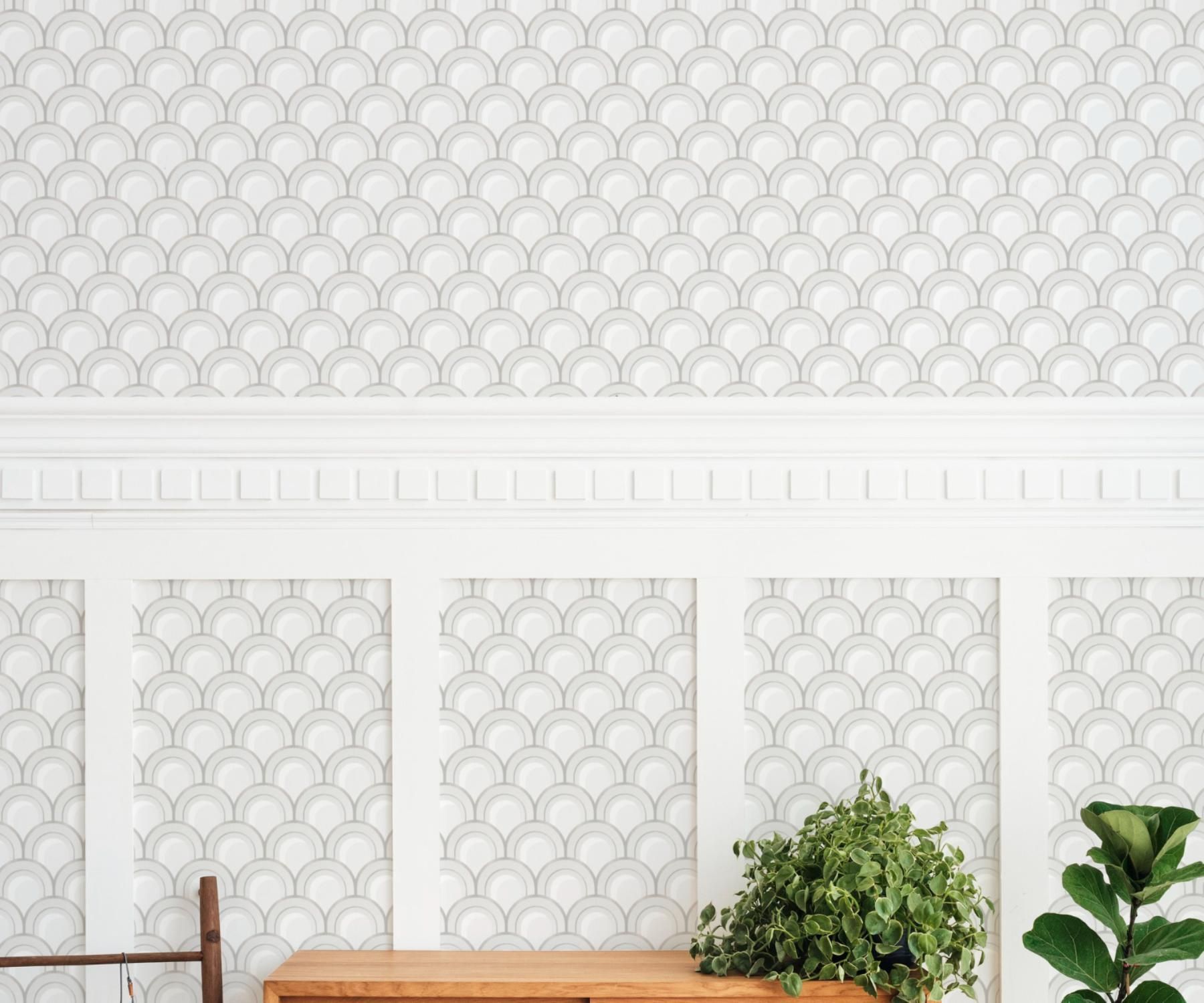Why Most Homeowners Choose the Wrong Exterior Paint for Wood
Many Saskatoon homeowners make mistakes when selecting exterior wood paint, which leads to early peeling, cracking, and fading. Our team has seen this problem in homes throughout the city - damage that could have been prevented. Quality paints last two to three times longer than budget options, making the original investment worth every penny in Saskatchewan's harsh climate.
Homeowners often ask us about the best exterior paint for their wooden surfaces. The answer isn't simple. Traditional oil-based paints are great at keeping water out, which seems perfect for exterior use. However, today's high-end latex and acrylic options provide similar protection with extra advantages. These premium products pack more pigments and acrylic solids that cover better - you'll get 350 to 400 square feet from each gallon. Our city's unpredictable weather makes drying time crucial. Oil-based paints need 6-8 hours to dry while latex or acrylic options are ready in 4-6 hours.
Our region's unique climate requires specific expertise in wood paint selection. Budget paints might save money upfront but fade quickly and need frequent touch-ups. Premium products keep their color longer despite intense summers and bitter winters. Our team's years of experience painting local homes has taught us how to pick the right exterior wood paint for each project. This ensures your home stays protected and beautiful for years to come.
Why Most Homeowners Get It Wrong from the Start
Saskatoon homeowners often make mistakes with exterior wood painting that lead to poor results. We've seen three big mistakes that can ruin DIY painting projects while serving the Saskatoon community over the years.
Overlooking the wood type and condition
Your success with exterior paint jobs starts with knowing your wood type. Saskatoon homes feature different wood types, and each one works differently with paint. Wood surfaces have five key traits that determine how well paint sticks: porosity, dimensional stability, hardness, texture, and tannin or oil content. To name just one example, oak soaks up more paint and needs extra primer and topcoats for good coverage. Paint sticks better to vertical or edge-grained surfaces than flat-grained surfaces of any wood type. This matters a lot in Saskatoon's climate where temperatures swing wildly. Poor wood prep will make your paint fail early.
Assuming all exterior paints work the same
Many Saskatoon homeowners think "paint is just paint." But exterior paint protects your home from our tough prairie weather. Each part of your home needs specific paint types to handle different levels of wear. Water-based latex paints work better than oil-based ones for most exterior wood jobs because they flex better with our seasonal temperature changes. Note that one coat rarely protects enough in our climate, despite what paint can labels might say. Our work on Saskatoon homes shows that you need proper painting methods and multiple coats for results that last.
Ignoring previous paint layers and compatibility
The trickiest mistake happens when people don't check if their new paint works with old finishes. Paint peels off when you put water-based latex paint over many layers of old alkyd or oil-based paint - we call this the "lift-off" effect. You can put water-based paint over oil-based paint, but not the other way around. You need to know your existing paint type before picking new exterior paint. Our Saskatoon painting team checks old finishes and preps surfaces carefully. This ensures the paint sticks well and protects your wood exterior for years to come.
The Role of Climate and Environment in Paint Failure
Saskatoon's harsh climate creates unique challenges for exterior wood paint that many homeowners don't realize. As local painting professionals, we've seen how our unique weather patterns affect paint performance and durability.
How humidity and temperature affect adhesion
Saskatoon's dramatic temperature changes make paint adhesion a tough challenge. Wood expands and contracts with temperature swings, which puts heavy stress on paint films. These changes can lead to cracking, peeling, and bubbling if you use the wrong paint. High humidity makes paint dry slower and can mess with coating adhesion. Paint layers can trap moisture during Saskatoon's humid summers and cause blistering and delamination. Low humidity makes paint dry too fast, which leads to poor adhesion and brittle finishes. Our experience shows that paint works best when relative humidity stays around 40% during application.
UV exposure and fading issues
Prairie sun takes a heavy toll on exterior wood surfaces. UV radiation breaks down paint's chemical bonds that give color and protection. This exposure weakens wood's natural structure by breaking down the lignin in wood fibers. Research shows UV exposure causes about 40% of paint damage in sunny areas. You can block harmful ultraviolet rays with premium exterior wood paints that have UV inhibitors, which protect both color and structural integrity. Dark colors fade faster than light ones because they absorb more heat - we've seen this countless times while working on Saskatoon homes.
Why regional climate-specific paints matter
Your home needs regionally appropriate paint solutions to handle Saskatoon's freezing winters, hot summers, and seasonal rain. Paint made for milder climates just doesn't last here. The best exterior wood paint in our region must resist freeze-thaw cycles while staying flexible. Quality paints should also contain mildewcides to stop mold growth during humid periods. Acrylic paints work better than other options in our climate because they resist UV rays well and stay flexible. Saskatoon homes usually need repainting every 5-10 years, and you should check regularly for early signs of wear. Local painting experts understand our environmental challenges and can help you pick the right exterior wood paint for long-lasting protection.
Choosing the Right Exterior Paint for Wood: What Experts Recommend
Our expert team has painted Saskatoon homes for years and learned a lot about exterior wood paints that work well in our tough prairie weather.
What is the best exterior paint for wood?
Water-based acrylic paints have become the preferred choice for wooden exteriors in Saskatoon, replacing traditional oil-based options. These modern paints flex well with wood's natural movement during our extreme seasonal changes. The premium acrylic versions keep their bright colors longer under the harsh summer sun—a significant advantage in our climate.
Acrylic vs. oil-based: pros and cons for wood
Oil-based paints were known for keeping water out well, but UV light makes them crack and they turn yellow as time passes. Acrylic paints bend better, let wood breathe, and keep their color longer. Oil-based paints still work great on doors and trim where you need that high-gloss finish. Quality acrylic paints pack more pigments and solids to create a thicker protective layer that lasts longer than cheaper options.
Understanding paint breathability and flexibility
Paint that breathes lets trapped moisture escape as vapor and stops blistering or wood rot. This matters a lot in Saskatoon where humidity levels change fast. Wood moves and shifts through our seasons, so paint needs to stretch and flex to avoid cracking and peeling.
The importance of low VOCs for outdoor use
Low-VOC exterior paints help both health and environment by cutting down chemical emissions. These green options now come in many colors and finishes that last just as long and resist weather just as well.
Application Mistakes That Undermine Even the Best Paint
Quality exterior wood paint alone won't guarantee success without proper application techniques. Our team has fixed numerous paint failures in Saskatoon homes where product quality wasn't the issue.
Skipping surface preparation
Paint failures happen 80% of the time because homeowners don't prepare surfaces properly. Many people rush through cleaning and skip removing dirt, mildew, and peeling paint. A well-prepared surface makes paint last longer, which is why our team thoroughly cleans every surface before we apply the best exterior paint for wood.
Not using primer on bare or weathered wood
Wood's porous grain needs primer to help topcoat paint maintain its elasticity. Paint will crack and peel early without it. Saskatoon's weathered wood needs extra care - moisture levels should stay under 14% before priming. Our team uses premium oil-based primers on bare wood to build the perfect foundation.
Applying paint in the wrong weather conditions
Paint won't stick right when temperatures drop below 50°F or climb above 85°F. High humidity makes paint dry slowly and creates bubbles. Our team watches weather forecasts closely to ensure Saskatoon homes get at least 48 hours of stable conditions.
Using the wrong tools or techniques
Heavy pressure creates streaky finishes when paint builds up at brush or roller edges. The wrong tools on specific surfaces will also hurt coverage and durability.
The Right Paint Type For Saskatoon Weather
Our painting team's experience with Saskatoon's unique weather extremes has given us exceptional insights into wood exterior protection. We've discovered that 100% acrylic paints developed for extreme temperature variations protect Saskatchewan homes best. These premium paints stay flexible even as temperatures drop to -40°C in winter and rise above 30°C during summer.
Our decades of service to Saskatoon homeowners have taught us valuable lessons. Many national paint brands claim their "all-climate" options work well, but they struggle with our local challenges. We select products that have improved UV stabilizers and mildew inhibitors suited to prairie conditions. Note that choosing the right paint from the start saves homeowners thousands in unnecessary repainting costs.
We know exactly which paint solutions work best based on your wood type, home's orientation, and landscape features. The specialized paints combined with proper preparation create a shield that withstands everything from ice damming to intense summer sun.
Our Saskatoon painting team brings more than just painting skills. We're local weather experts who understand your home's unique challenges. Your most valuable asset deserves the best exterior wood paint that can endure Saskatchewan's toughest seasons.
Key Takeaways
Understanding the right exterior paint for wood can save homeowners thousands in premature repainting costs and protect their investment from harsh weather conditions.
• Wood type and condition matter more than paint brand - Different wood species require specific primers and application techniques for proper adhesion and longevity.
• Climate-specific paint selection is crucial - Regional formulations with UV stabilizers and freeze-thaw resistance outperform generic "all-climate" options in extreme weather.
• Surface preparation determines 80% of paint success - Proper cleaning, priming, and moisture testing prevent most coating failures regardless of paint quality.
• Modern acrylic paints outperform oil-based options - High-quality acrylics offer superior flexibility, breathability, and color retention for wood exteriors.
• Application timing and technique are non-negotiable - Painting in proper weather conditions (50-85°F, low humidity) and using correct tools ensures optimal adhesion and finish quality.
The key to long-lasting exterior wood paint lies in matching the right product to your specific climate, wood type, and application conditions rather than simply choosing the most expensive option.
FAQs
Q1. What type of paint is best for exterior wood surfaces? High-quality acrylic paints are generally the best choice for exterior wood surfaces. They offer excellent flexibility, durability, and color retention, making them ideal for withstanding various weather conditions and UV exposure.
Q2. How does climate affect exterior paint performance? Climate plays a crucial role in paint performance. Factors like humidity, temperature fluctuations, and UV exposure can impact paint adhesion, cause fading, and lead to premature failure. It's important to choose paints specifically formulated for your local climate conditions.
Q3. Is it necessary to use primer before applying exterior paint? Yes, using primer is essential, especially on bare or weathered wood. Primer seals the wood grain, improves paint adhesion, and helps prevent issues like peeling and cracking. It's a crucial step in ensuring the longevity of your paint job.
Q4. How often should I repaint the exterior of my house? The frequency of repainting depends on various factors, but typically, exterior paint jobs last 5-10 years. Regular inspections can help you catch early signs of wear and determine when repainting is necessary to maintain proper protection for your home.
Q5. Why is proper surface preparation important for exterior painting? Surface preparation is critical because it directly impacts paint adhesion and longevity. Properly cleaning, sanding, and priming the surface ensures that the paint adheres well and performs optimally. Skipping this step is a common cause of paint failure and can significantly reduce the lifespan of your paint job.
Show facts




